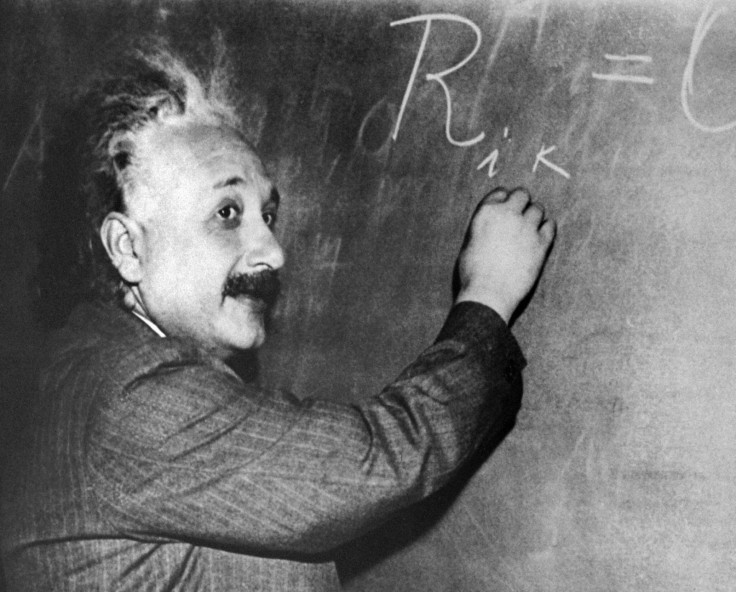Searching for genius: The strange and wonderful story of Einstein's brain

In April 1955, Albert Einstein was admitted to hospital with a burst abdominal aortic aneurysm, but declined surgery, saying: "I want to go when I want. It is tasteless to prolong life artificially. I have done my share, it is time to go. I will do it elegantly."
On the morning of 18 April 1955, he uttered a few last words in German, his mother tongue, and died.
The nurse on duty at Princeton Hospital on that morning did not speak German, so the famous physicist's final words were lost for eternity.
But the story didn't end there. In fact, the curious story of the scientist's brain had just begun.
It all started when Dr Thomas Harvey, the pathologist who conducted the autopsy, decided to go one step further, sawing open the celebrated scientist's skull and removing his brain.
Case of the missing brain
The reason why Harvey removed Einstein's brain is still disputed to this day.
A 1979 biography of Einstein by Ronald Clark – Einstein: The Life and Times – states that the physicist had "insisted that his brain should be used for research and that he be cremated", but more recent research contradicts this, suggesting that the brain was removed without the consent of both Einstein or his relatives.
Einstein was cremated later that day in Trenton, New Jersey. But when his son Hans Albert learned that his father's brain had been removed he was furious. But Harvey managed to obtain a reluctant blessing to keep Einstein's brain from Hans, assuring him that research on the brain would be published in the most prestigious scientific journals.
But as the years passed, there were no scientific papers or unique findings about the brain of one the 20th century's greatest minds.
In fact, more than 20 years passed since a New York Times article from 20 April 1955 proclaiming that the study of Einstein's brain may "shed light on one of nature's greatest mysteries – the secret of genius".
However, Einstein's brain lay forgotten until 1978, when a young reporter at New Jersey Monthly called Steven Levy was assigned to the story of its afterlife by his editor Michael Aron.
A brain's unusual life
Aron had been fascinated by the story of the brain ever since reading about it in the New York Times.
After trying "every possible channel" to find Harvey, Levy eventually tracked him down to Wichita, Kansas, where he was working in a medical lab.
After some persuasion, the initially reluctant Harvey agreed to meet Levy to discuss Einstein's brain.
When Levy arrived in Kansas, it turned out that Harvey had measured and photographed the 2.64lb brain after Einstein's autopsy, and found that its anatomical variations were within the normal range.
After preserving sections of the brain alongside a team at the University of Pennsylvania, Harvey had sent samples to experts around the country.
The results were slow to arrive – very slow, in fact. Nothing had been published after nearly 25 years.
"He was a somewhat introverted guy, a polite guy," Levy recalled in an interview with the BBC. "But as the conversation went on, he had a pride that he was doing this study, but he didn't really have good answers as to why, after almost 25 years, nothing had been published."
Brain in a box
When Levy asked to see some pictures of the brain, the doctor stood up and walked over to a pile of brown cardboard boxes. He opened the bottom box, labelled Costa Cider, and removed a mason jar containing parts of the celebrated scientist's brain.
"He reaches in, pulls out these big mason jars," Levy told the BBC. "And there was Einstein's brain. It was amazing."
In Levy's New Jersey Monthly article, he described the contents of one of the jars as: "A conch shell-shaped mass of wrinkly material the colour of clay after firing. A fist-sized chunk of greyish, lined substance, the apparent consistency of sponge. And in a separate pouch, a mass of pinkish-white strings resembling bloated dental floss."
He wrote that a second, larger jar contained "dozens of rectangular translucent blocks, the size of Goldenberg's Peanut Chews".
Following the discovery – which was picked up across the world's media and in the journal Science – many studies were held on sections of the brain, but none have yielded conclusive results explaining why Einstein was a genius.
Inspirational cranium
Harvey returned the brain to Princeton Hospital in 1998, a year before he took it on a road trip across the US with journalist Michael Paterniti. Paterniti later wrote a book about the experience, called Driving Mr Albert.
Paterniti died in 2007, but since 1998 the 170 chunks of Einstein's brain Harvey owned have been in the custody of Dr Elliot Kraus, the chief pathologist at the University Medical Center of Princeton at Plainsboro.
Despite the fact that the modest scientist would have almost certainly abhorred the media spectacle surrounding his famous brain, it still has the ability to inspire, intrigue and beguile.
As Levy wrote when he first saw the brain in 1978: "I had suspected that the inevitable lifelessness of the material world would make looking at the brain matter as interesting as viewing a dead jellyfish.
"My fears were unjustified. For a moment, with the brain before me I had been granted a rare peek into an organic crystal ball.
"Swirling in formaldehyde was the power of the smashed atom, the mystery of the universe's black holes, the utter miracle of human achievement… It is something of ourselves at our best."
© Copyright IBTimes 2025. All rights reserved.





















